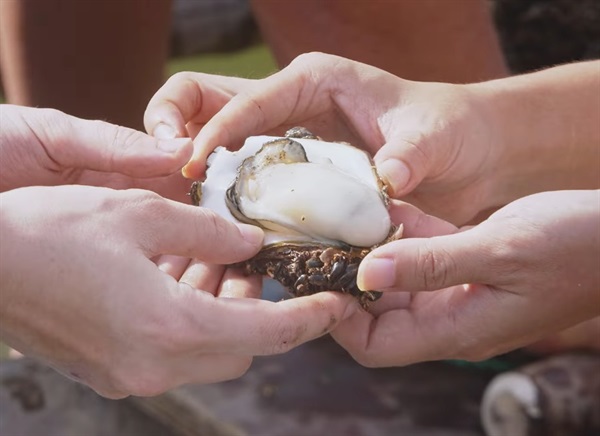When speaking of shellfish farming in Hong Kong, Lau Fau Shan must be mentioned. Situated in Deep Bay where water is mostly brackish near the mouth of Pearl River Delta, Lau Fau Shan in Deep Bay is very suitable for oyster culture. It is said to have more than 700 years of oyster farming history. Oyster farmers will put oyster posts nearshore to which the pelagic baby oysters will attach and grow, then transfer them for fattening on the rafts floating at the sea nearshore. When grown to marketable size, these oysters will be sold as live, and some will be processed and sold as golden dried oyster, dried oyster or oyster sauce.

Biologists had noted that some oysters raised in Lau Fau Shan are larger in size than other individuals, and it is suspected that oysters on these farms belong to different species. In 2003, through mitochondrial DNA analysis, the larger oysters were confirmed as a new species, and were named as Hong Kong Oyster. Although named after Hong Kong, this oyster could also be found in Pearl River Delta and along the coast of southern China. Individuals of the Hong Kong oyster can live for seven to eight years (up to a giant size), and therefore the species is deemed as an important commercial species.
Oysters are filter feeders. Some researchers have shown that they can improve seawater quality tremendously, providing essential ecosystem services. Furthermore, oyster reefs are important habitat and nursery grounds for many marine organisms, and their robust structure provides additional coastal protection against extreme weather conditions, and are therefore considered to have important conservation value.
| Family | Ostreidae |
|---|---|
| Scientific Name | Magallana hongkongensis |
| Adult Size | Up to 20 cm in shell length |
| Habitat | Shores of estuarine water |
| IUCN Red List Status | Not Evaluated |
